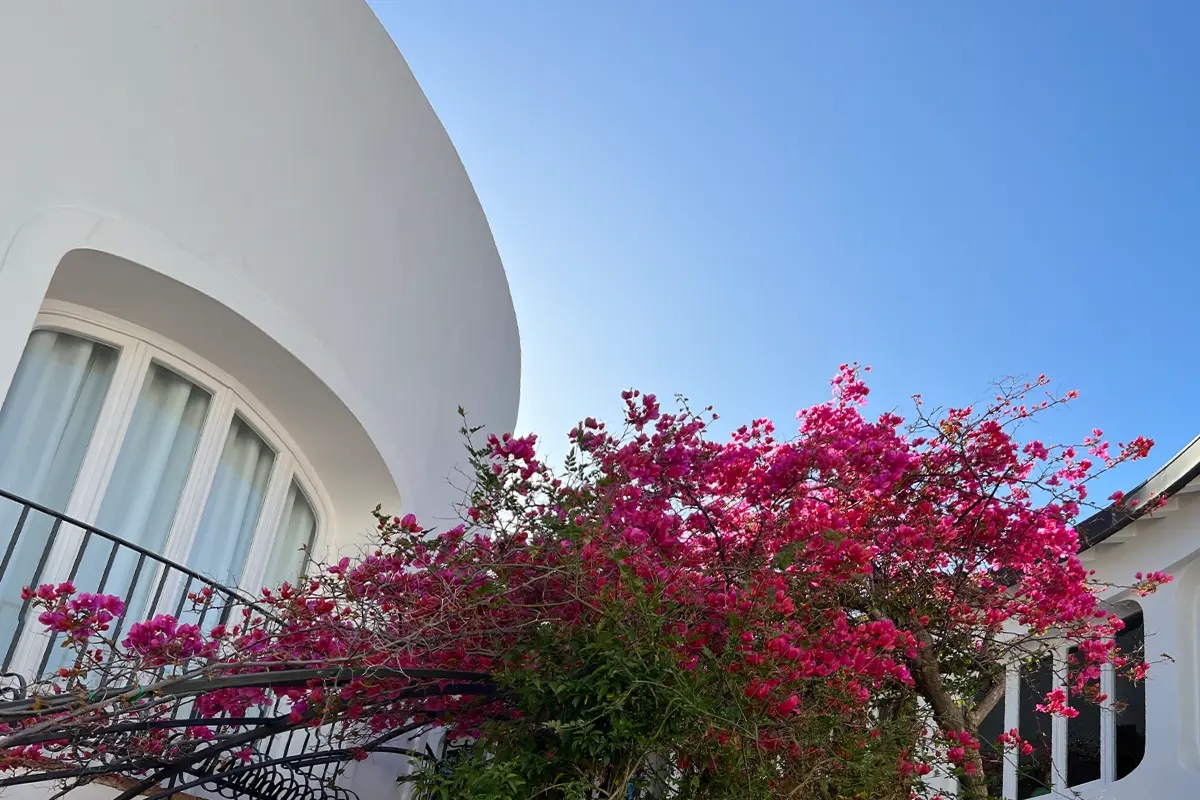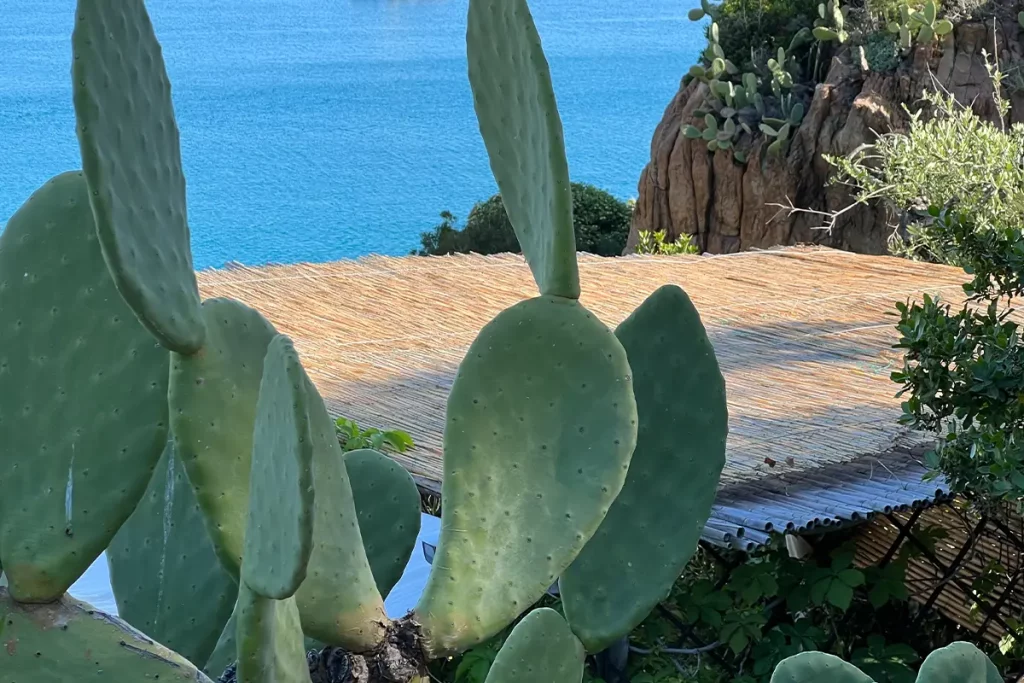Mediterranean architecture adapts to small coves, in this corner of Sicily, just a few meters from the center of Cefalù – the energy of this region pulses at Le Calette, after so many decades still a family-run hotel
Tourism in Sicily in numbers
The National Agency for Tourism reports that at the end of 2022, Sicilian accommodation facilities counted more than 4 million 858 thousand arrivals (+56 percent compared to 2021) and a total of 14 million 700 thousand presences, of which about 6.4 million foreigners (43.5 per cent of the total). An increase of 51.7 per cent compared to the same period in 2021.
The increase in the number of stays in the Region is also confirmed, with an average of over three days. Another trend to note: in recent years, Sicily – the North of the region especially – has been attracting visitors not only in the summer but in all seasons of the year. Also contributing to Sicily’s success was the fortune of the Golden Globe-winning TV series The White Lotus. A destination of choice for Americans, British and Australians, so much so that the New York Times spoke of a ‘White Lotus Vacation’.
Tourism in northern Sicily, an all-season experience
The Sicilian capital, Palermo, boasts a wealth of monuments and historical sites, such as the Norman Palace and the Palatine Chapel, which date back to the Norman era. The Cathedral of Palermo, with its majesty, is an architectural masterpiece. Visitors can immerse themselves in the heart of the city by exploring the traditional markets – such as the Ballarò Market – where the authentic Sicilian spirit can be breathed.
The Aeolian Islands, a volcanic archipelago off the north coast of Sicily, are a must-see for visitors seeking naturalistic adventures, including beaches and active volcanoes. The island of Vulcano is known for its hot springs and volcanic mud, while the island of Stromboli offers the chance to admire one of the world’s most active volcanoes. In addition to beaches, northern Sicily also offers a hinterland to explore: the Madonie Park is a protected natural area where the gaze is lost in the mountains. Northern Sicily is also home to coastal villages that offer a combination of natural beauty and authenticity, far from the overly touristy spots. Cefalù is one such gem.
Cefalù and the Caldura bay
Just a few meters from the town center, made up of medieval streets and dominated by the Norman cathedral, Cefalù lies in a long bay – the Bay of Caldura. Characterized by a pebble beach and framed by a series of small cliffs that create an intimate and tranquil environment, it owes its name to the Italian word ‘Caldo’ – ‘Hot’, which is due to the warm sea currents that get to the bay, making the water temperate even during the colder months.
Its isolated location and relative tranquility make it an ideal destination for those seeking an escape from the hustle and bustle of the city. The bay is surrounded by lush Mediterranean vegetation, with pine trees and shrubs providing shade and coolness. For more than five decades, this bay has been home to Hotel Le Calette. The complex follows the folds and inlets of the bay with its Mediterranean architecture, insinuating itself into the small coves.
Hotel Le Calette, Cefalù
The Cacciola-Miccichè family continues to manage and enhance the structure, which is surrounded by a botanical garden of almost two hectares spread over several levels and areas, starting from a central hub where the main services are located. At each point, there are panoramic open spaces overlooking the sea.
Hotel Le Calette in Cefalù – history and present
The history of Hotel Le Calette began as a family holiday home in the mid-20th century. Over the years, the family steadily expanded and improved the mansion, adding new rooms, a panoramic swimming pool and common areas, until it became a hotel. During the 1980s, Hotel Le Calette was further renovated, the interiors redesigned in a contemporary style, while maintaining a link with the tradition and atmosphere of the place.
Today, Hotel Le Calette is a five-star hotel, still family-run. This has allowed it to maintain a strong connection with its history and the surrounding area. Recently built is the SPA, located in the basement but connected to the outdoor light through the pool, visible from the gym area thanks to a glass system.
Hotel Le Calette, Cala Luna restaurant at Cefalù
The link with the territory is also a constant at the table. Dario Pandolfo, a thirty-year-old chef from Milazzo – formerly of St. Hubertus in San Cassiano and of Geranium in Copenhagen – is at the helm of the fine-dining restaurant Cala Luna, set on a lawn under the stars of Cefalù during the summer and housed in a panoramic room in the cooler months. Forty covers for a menu developed with producers and proposals of modern local cuisine.
Cefalù, the Cathedral
Outside is Cefalù. Walking along the coast, in the town center is the Cefalù Cathedral, built in the 12th Century in a combination of different architectural and artistic styles. Norman influence prevails, in the simple and sober lines, but traces of Byzantine, Islamic and Romanesque art can also be read. For this reason, the cathedral of Cefalù retains a unique identity. The façade, made of limestone, is enriched by a central portal and two side windows, which contribute to giving a sense of balance and proportion to the building. Inside, the apse mosaic by the Byzantine artist Basil depicts Christ Pantocrator, surrounded by angelic figures and apostles.
Cefalù Cathedral was commissioned by the Norman King Roger II as a sign of gratitude for being saved from a storm at sea. According to legend, Roger promised to build a cathedral on the spot where he had landed safely. The construction of the cathedral was incredibly fast for the time. It is said to have taken only ten years, from 1131 to 1141, to complete the entire building. In 2015, the cathedral was included in the UNESCO World Heritage List as part of the serial site ‘Arab-Norman Palermo and the Cathedral Churches of Cefalù and Monreale’.
Castelbuono and Palazzo Ventimiglia – the Palatine Chapel decorated by Giacomo Serpotta
A few kilometers drive from Cefalù, inland, is Castelbuono, a medieval village that boasts cobbled streets, picturesque arches and a panoramic view of the surrounding mountains. It is home to Palazzo Ventimiglia, a noble residence dating back to the 14th century, built by the Ventimiglia family of Genoese origin. This building, an example of Gothic-Catalan architecture, houses Serpotta’s Palatine Chapel. It is decorated with 18th-century frescoes and stuccoes depicting biblical scenes and intricate floral motifs. In the lower part are demonic figures, in the upper part celestial ones. In the middle the pelican, symbol of Jesus, who delivers from evil. The author’s signature is not missing: a shell (representing St. James), and two snakes: Giacomo Serpotta.
In the village is La Pasticceria Fiasconaro, founded in Castelbuono in 1953, known for its artisanal production of the Panettone Oro Nero, an interpretation of the classic Italian Christmas cake, enriched with top quality chocolate and Sicilian almonds. The pastry shop also offers a variety of other delicacies, including cannoli, cassate, pistachio cakes and traditional biscuits. For more than five years, Fiasconaro has had an active collaboration with Dolce & Gabbana.
The history of Cefalù
The history of Cefalù dates back to ancient times, when it was a Greek colony called Kephaloidion. Later, it was conquered by the Romans and then by the Byzantines. Over the centuries, the town was influenced by different cultures, including the Arabs and Normans, who contributed to its artistic and cultural heritage.
The origin of the name ‘Cefalù’ comes from the Greek word ‘kephalè’, meaning ‘head’. The town takes its name from the characteristic head-shaped rock located near the sea, called ‘La Rocca’. This imposing rock formation dominates the skyline of Cefalù and has become an iconic symbol of the town.
Le Calette
Via Vincenzo Cavallaro, 12 – 90015 Cefalù (PA)
Matteo Mammoli

























